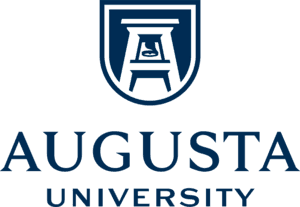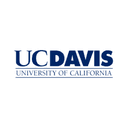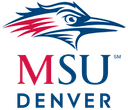Open Rank- Clinical Faculty in Radiology and Imaging
Open Rank- Clinical Faculty in Radiology and Imaging
Job ID: 283467
Location: Augusta University
Full/Part Time: Full Time
Job Summary
The Department of Radiology and Imaging in the Medical College of Georgia at Augusta University is seeking a faculty member at the rank of Instructor, Assistant Professor, Associate Professor or Professor, as a Board Certified/Board Eligible radiologist with fellowship training in Neuroradiology. Duties will include teaching medical students, supervising residents, mentoring fellows and providing clinical care to patients. Candidates will be providing clinical services at Wellstar MCG Health and Children's Hospital of Georgia (all on the same main campus), as well as our freestanding outpatient imaging center (7 miles from main campus). This position does not meet the requirements to be on a tenure track.
Responsibilities
An academic neuroradiologist has a multifaceted role that includes clinical, teaching, research, and administrative responsibilities. Here are the typical job duties:
1. Clinical Responsibilities:
- Interpretation of Neuroimaging: Analyze and interpret various neuroimaging modalities, such as MRI, CT scans, PET scans, and angiography, to diagnose and monitor conditions affecting the brain, spine, and nervous system. This includes assessing conditions such as stroke, brain tumors, neurodegenerative diseases, multiple sclerosis, trauma, and spinal disorders.
- Consultation: Collaborate with neurologists, neurosurgeons, oncologists, and other specialists to provide insights into imaging findings and help guide patient management.
- Advanced Imaging: Perform or assist with advanced imaging techniques such as functional MRI (fMRI), diffusion tensor imaging (DTI), and spectroscopy for research or clinical applications.
- Radiologic Procedures: Conduct or assist in procedures such as image-guided biopsies, lumbar punctures, or spinal injections.
2. Teaching and Education:
- Medical Education: Teach medical students, residents, and fellows about neuroimaging techniques, anatomy, disease processes, and diagnostic interpretation.
- Lectures and Seminars: Give lectures, presentations, and case discussions at grand rounds, departmental conferences, or regional/national meetings to share expertise in neuroradiology.
- Mentorship: Supervise residents, fellows, and junior faculty in clinical practice, teaching them how to interpret neuroimages and perform imaging-guided procedures.
- Curriculum Development: Contribute to developing educational programs and curriculum in neuroradiology, ensuring that they reflect the latest research and advancements in the field.
3. Research Responsibilities:
- Clinical Research: Engage in or lead research studies to improve diagnostic imaging techniques, assess the efficacy of different imaging modalities, or investigate the role of imaging in the prognosis and treatment of neurological disorders.
- Publications: Publish research findings in peer-reviewed journals, present at academic conferences, and contribute to advancing the field of neuroradiology through scholarly work.
- Grant Writing: Apply for research funding from government agencies, private foundations, or industry partners to support innovative projects in neuroimaging or neurodegenerative diseases.
- Multidisciplinary Research: Work closely with neurologists, neurosurgeons, psychologists, and other researchers to conduct interdisciplinary studies, particularly in areas like brain mapping, neuroplasticity, and functional imaging.
4. Administrative Duties:
- Quality Control: Involvement in developing and maintaining quality control and assurance procedures to ensure accurate, high-quality diagnostic imaging in the department.
- Peer Review: Perform peer review for fellow neuroradiologists and trainees, providing feedback on cases and imaging interpretation.
- Clinical Workflow: Assist in optimizing workflow for neuroimaging services, ensuring timely and efficient delivery of imaging results, especially for critical cases such as strokes or trauma.
5. Continuing Education:
- Staying Current: Regularly participate in continuing medical education (CME) to keep up with advances in neuroimaging technologies, techniques, and medical research.
- Professional Development: Attend conferences and workshops (e.g., the American Society of Neuroradiology [ASNR] annual meeting) to expand knowledge, improve skills, and network with peers.
6. Collaboration and Interdisciplinary Work:
- Collaborative Care: Work closely with neurologists, neurosurgeons, psychiatrists, and other specialists in multidisciplinary teams to deliver comprehensive care to patients with neurological disorders.
- Clinical Trials: Participate in clinical trials involving neuroimaging, contributing to the development of new diagnostic or therapeutic approaches for neurological diseases.
In summary, an academic neuroradiologist is deeply involved in the clinical interpretation of neuroimaging studies, educating future radiologists and healthcare professionals, conducting cutting-edge research to advance the field, and contributing to the administration of radiology services. Their role blends patient care with academic contributions and collaboration with a range of medical disciplines.
Required Qualifications
MD or equivalent
Fellowship training in Neuroradiology
Georgia Medical License, BLS/ACLS, Board certified or eligible
Instructor - Entry level position with 0-2 years of experience
Assistant Professor- Early level career as a faculty member with appropriate post graduate training
Associate Professor- Mid level career faculty member with at least five years at rank of Assistant Professor or comparable training, background, and experience.
Professor- Senior level career faculty member with at least five years at the rank of Associate Professor or comparable training, background, and experience.
Required faculty employment qualifications for all USG institutions and all academic ranks within these institutions shall be:
- Consistent with the Southern Association of Colleges and Schools Commission on Colleges (SACSCOC)'s requirements for institutional accreditation;
- Evidence of ability as a teacher;
- Evidence of activity as a scholar and ability in all other duties assigned;
- Successful experience (which will necessarily be waived for those just entering the academic profession who meet all other requirements); and,
- Desirable personal qualities judged on the basis of personal interview, complete biographical data, and recommendations.
Shift/Salary/Benefits
This position is fiscal year based and works year-round.
The intended work commitment or full-time equivalent (FTE) for this position is 1.0 and considered full-time.
Instructor - Salary and compensation is commensurate with education, experience, and achievements. The salary is subject to availability of funds.
Assistant Professor- Salary and compensation is commensurate with education, experience, and achievements. The salary is subject to availability of funds.
Associate Professor- Salary and compensation is commensurate with education, experience, and achievements. The salary is subject to availability of funds.
Professor- Salary and compensation is commensurate with education, experience, and achievements. The salary is subject to availability of funds.
Comprehensive benefits include medical, dental, vision, 13 paid holidays, vacation leave, sick leave, generous retirement plans, tuition waiver, wellness options, and much more!
Also, our full-time employees who have been employed with us successfully for more than 6 months can be considered for the Tuition Assistance Program.
Rank and salary are determined at the time of hire and are based on a variety of factors including but not limited to experience, education, credentials, specialty, training, etc. while also considering internal equity and market data.
Advancement through the faculty ranks at Augusta University is only through the annual Promotion and Tenure process in which faculty may apply if eligible (typically five-year increments). For more information on ranks, please review the Augusta University Promotion and Tenure Website: https://www.augusta.edu/faculty-affairs/promotionandtenure.php
Whoops! This job is not yet sponsored…
Or, view more options below
View full job details
See the complete job description, requirements, and application process
Express interest in this position
Let Augusta University know you're interested in Open Rank- Clinical Faculty in Radiology and Imaging
Get similar job alerts
Receive notifications when similar positions become available







